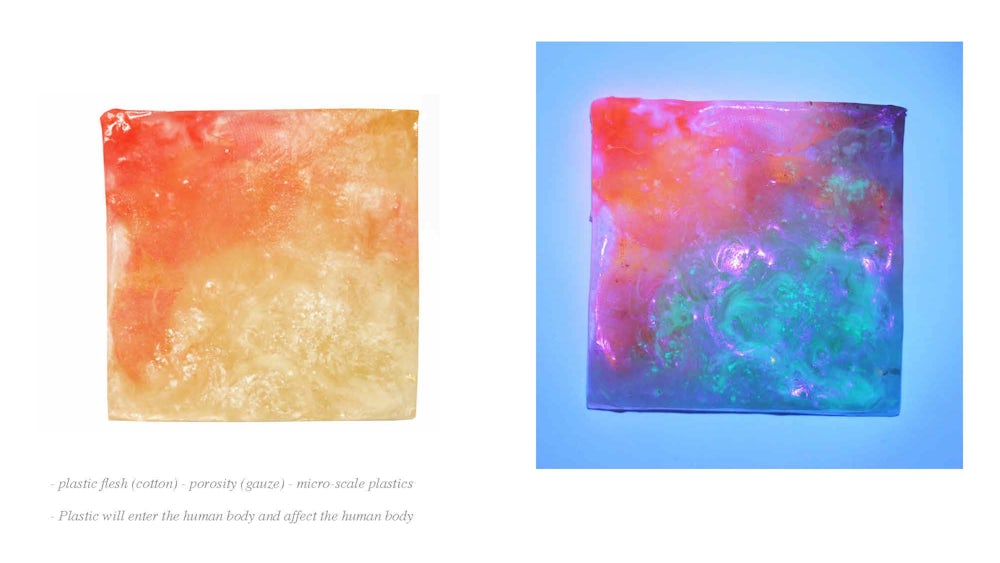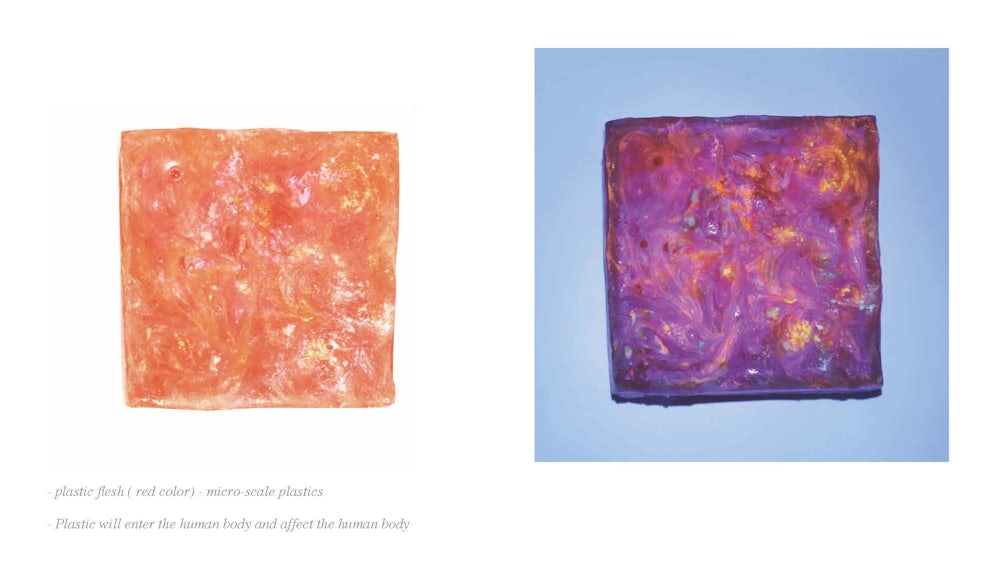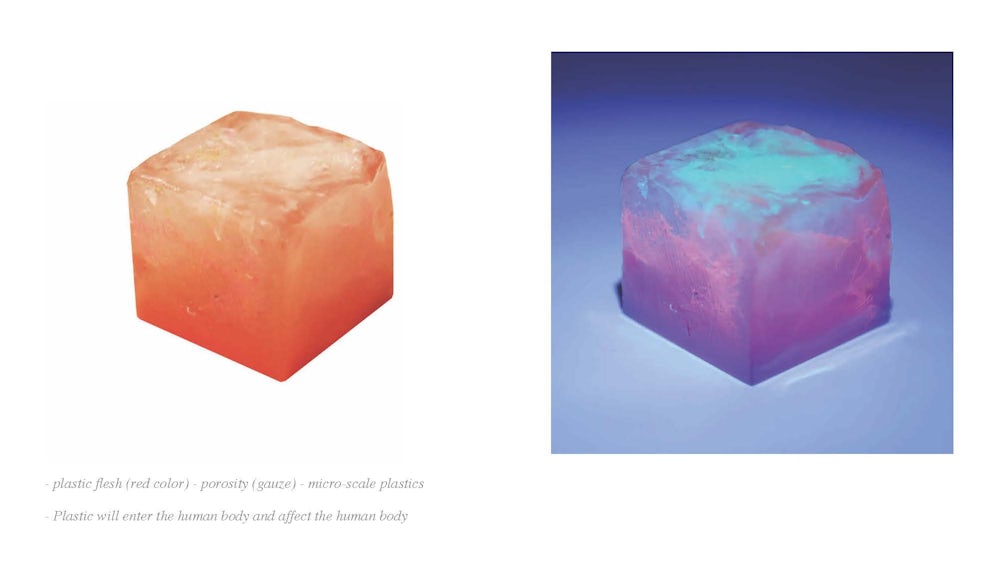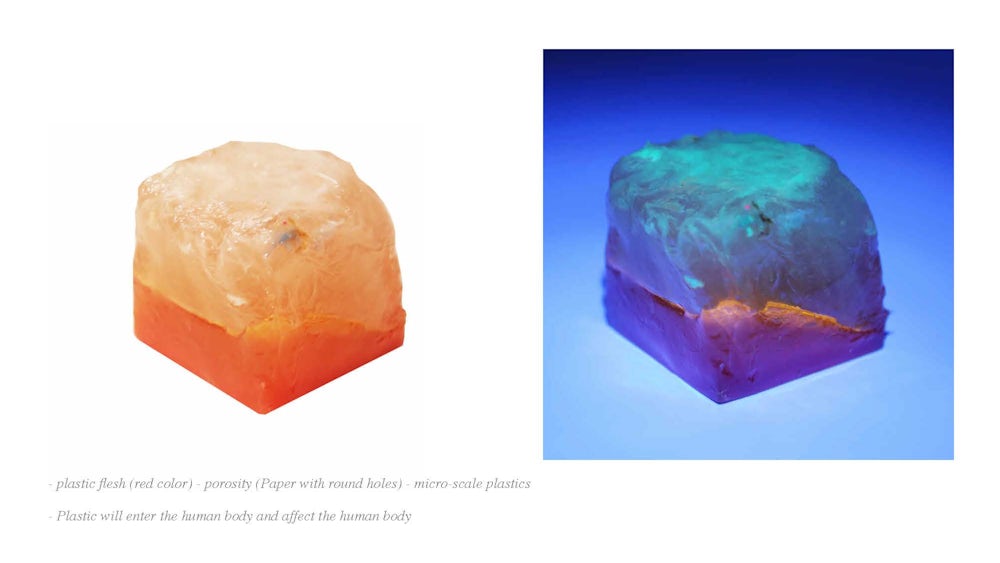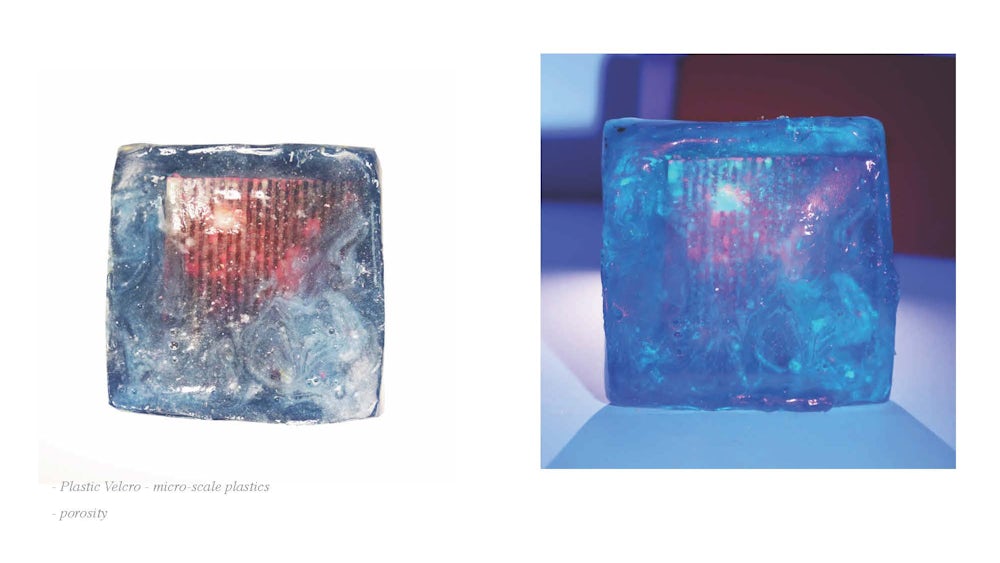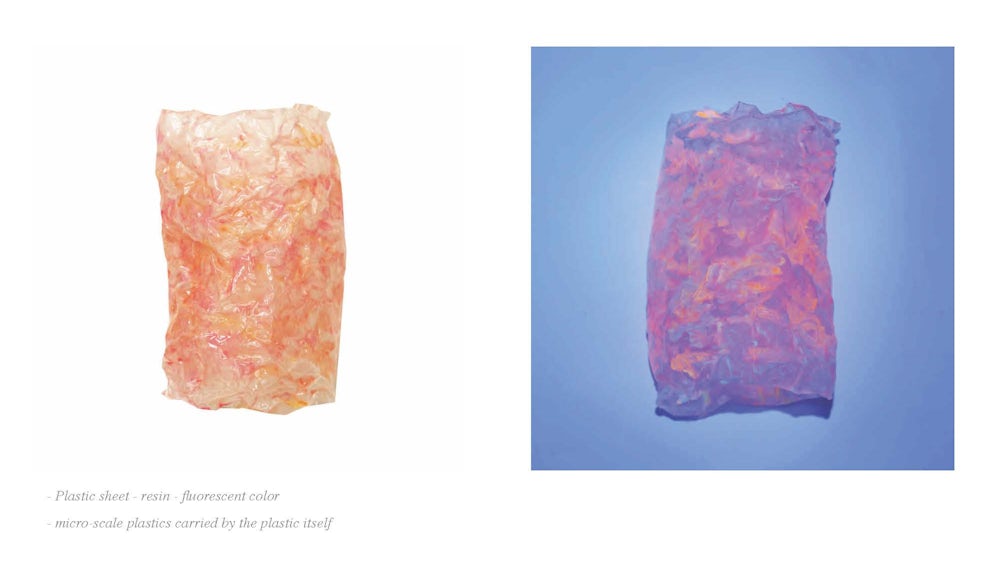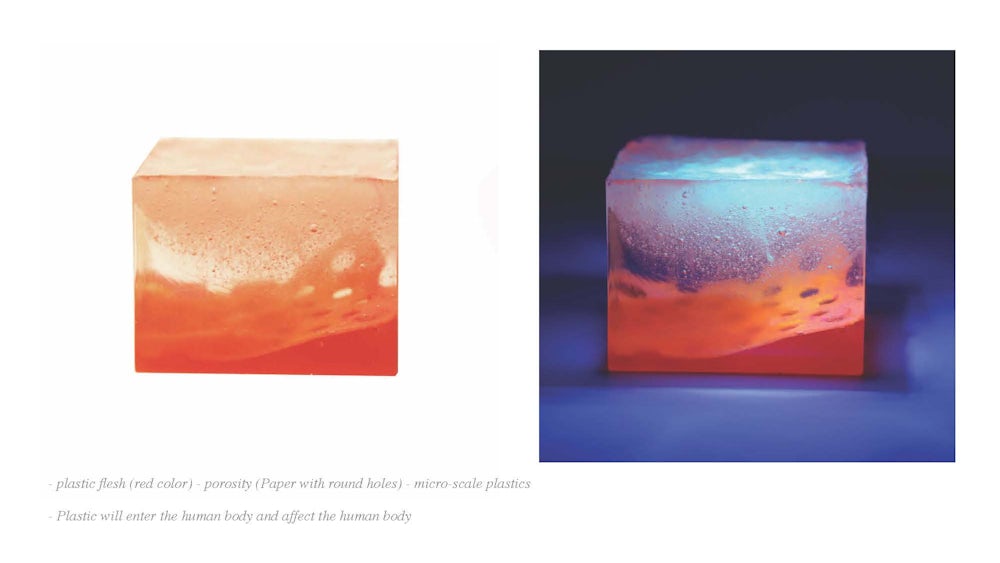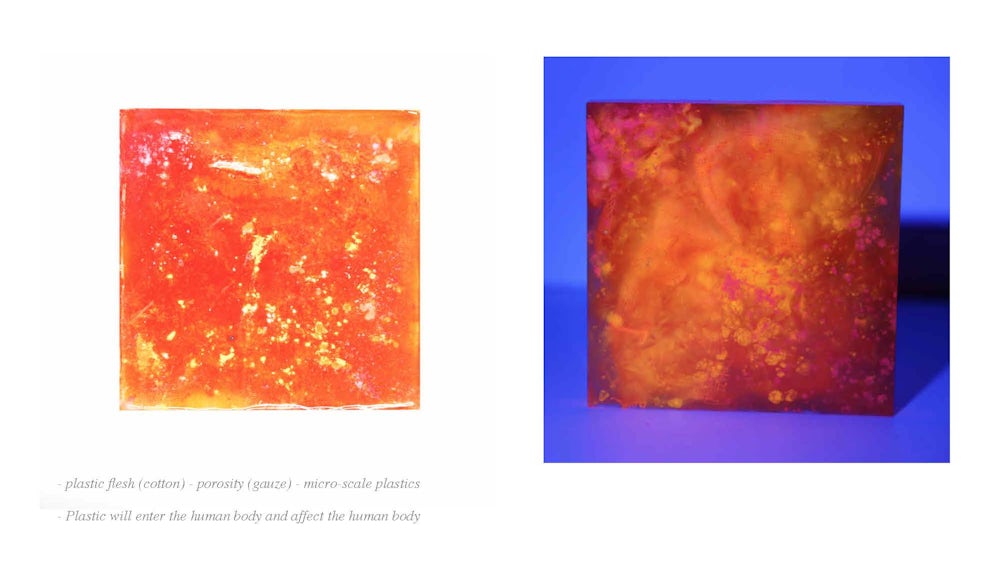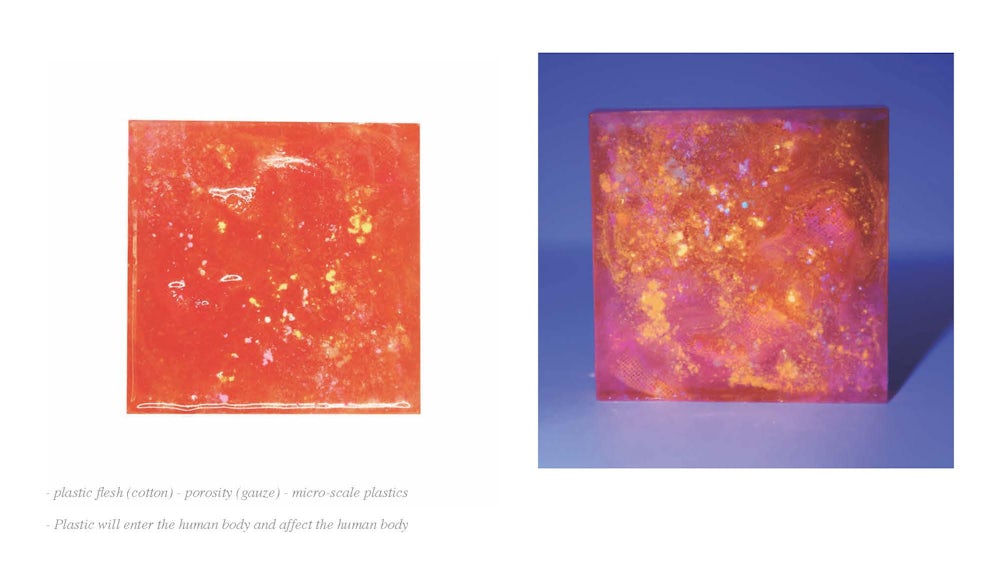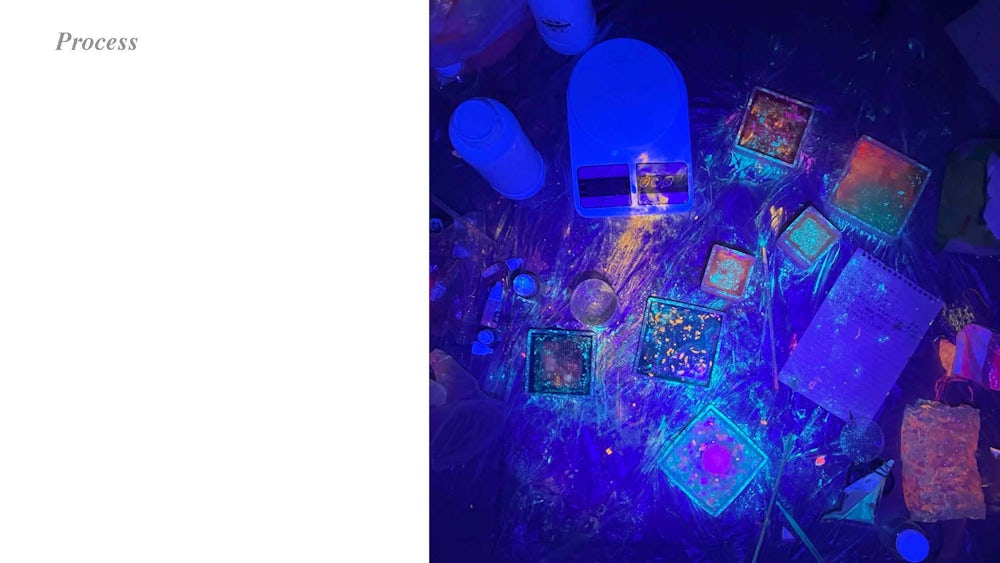We produce and consume so much plastic every year. The raw materials needed for plastic production has a detrimental impact on health, including children's development and people's reproductive system. These micro-scale elements transgress the boundaries of our bodies and problematize any strict physical enclosure. As Nancy Tuana would state, "The viscous porosity of our bodies and that of PVC allow for an exchange of molecules, where PVC and phthalates pass through the porosity of skin and flesh, particularly the mucosal linings of our intestines and our lungs. Plastic becomes flesh." 1. In that sense, plastic manifests itself through transgression and become one with the body.
The project highlights all plastic forms in the world, moving across various scales and spaces: from interior plastic to exterior plastic, from biology to the environment, from micro-scale plastic to plastic particles and large-scale plastic. Based on scientific methods of tracing plastic, scientists employ fluorescent colors to facilitate the tracking of plastic particles in the ocean. The project takes inspiration from this tracking method and takes form in a series of physical objects made of resin, with each marking a different scale of plastic and corresponding impact. The color coding moves from fluorescent green in relation to the micro-scale plastic to fluorescent orange and pink to that of the scale of the body.
Tuana, Nancy. 2008. "Viscous Porosity: Witnessing Katrina" In Material Feminisms, edited by Stacy Alaimo and Susan Hekman. Indiana University Press. ↩



